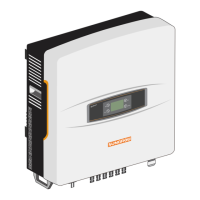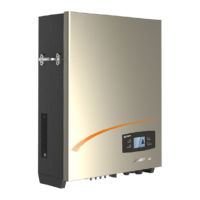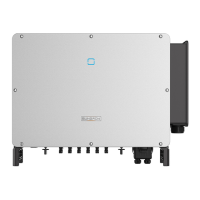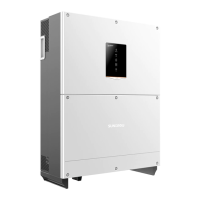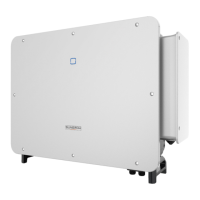42
The following requirements about PV string connection must be met. Otherwise, it
may cause irreversible damage to the inverter, which is not covered by the
warranty.
• Mixed use of PV modules of different brands or models in one MPPT circuit, or
PV modules of different orientation or inclination in a string may not damage in-
verter, but will cause system bad performance!
• The inverter enters standby state when the input voltage ranges between 560 V
and 600 V. The inverter returns to running state once the voltage returns to the
MPPT operating voltage range, namely, 40 V to 560 V.
Note the following items when laying out cables on site:
• The axial tension on PV connectors must not exceed 80 N. Avoid axial cable
stress on the connector for a long time during field wiring.
• Radial stress or torque must not be generated on PV connectors. It may cause
the connector waterproof failure and reduce connector reliability.
• Leave at least 50 mm of slack to avoid the external force generated by the cable
bending affecting the waterproof performance.
• Refer to the specifications provided by the cable manufacturer for the minimum
cable bending radius. If the required bending radius is less than 50 mm, reserve
a bending radius of 50 mm. If the required bending radius is greater than 50 mm,
reserve the required minimum bending radius during wiring.
5.6.1 PV Input Configuration
• The inverters SG5.0RS-ADA/SG8.0RS/SG9.0RS/SG10RS have three PV inputs, each
with independent MPP tracker. Each DC input area can operate independently.
• The PV strings to each DC input may differ from each other, including PV module type,
number of PV modules in each string, angle of tilt, and installation orientation.
5 Electrical Connection User Manual

